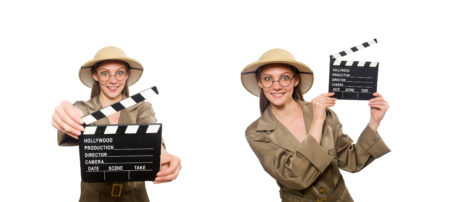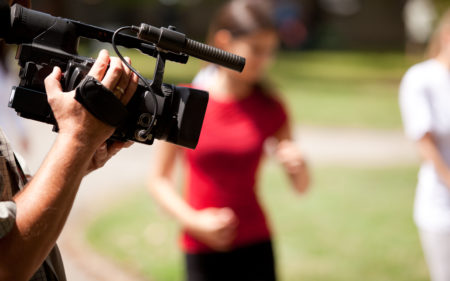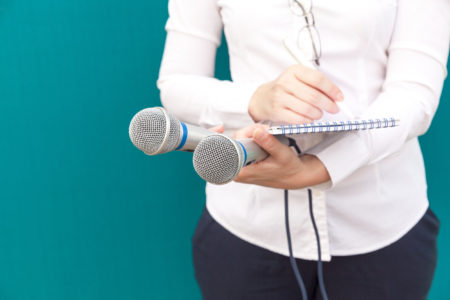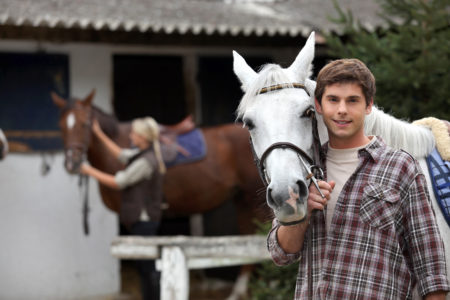Filming for Family and Friends is always a risky venture. And if you are also involved in the festivities of the event, then it is doubly so. The following event is sure to emphasize that fact.
One of our videographer colleagues, Jason, recently shared this really pitiful story at coffee. (Yes, we do talk shop when we get together. It cannot be avoided.) He asked us if we’d ever heard of a NIHI wedding. Of course, we had not heard of any such thing. Our only experience with NIHI was within the ancient re-runs of MASH. Grape NIHI was Radar’s favorite drink.

If You Are Hunting For Video Tips, We Have Them
Jason just gave us a quizzical look and started his story. He told of a beautiful young lady with tears in her eyes. She showed up at his office wondering if there was anything he could possibly do in post-production with her wedding video.
Filming Fiasco: A Bride’s Sad Story
She had not been able to afford a videographer. So her uncle took a video of the ceremony on his brand new video camera. (This story is already cringe-worthy in the eyes of Bullhorn Media Professionals.)
Jason did not have the heart to watch the video with her. And he did not give her much hope about how much he could fix an amateur video. Then that evening, he took a look, and he understood the girl’s tears. The focus was good. The white balance was fine. The stationary camera had not been changed.
When an Amateur Tries to Fill Pro Shoes
The uncle did not want to walk around during the wedding. He left it on a spindly tripod front and center of the church. Unfortunately, the entire wedding was on a stage about 3 feet above the heads of the audience. The prosumer camera did the best it could do, considering the uncle never checked it during the ceremony.
You see the camera filmed the entire wedding ceremony focused on the wedding party, from the knees down. Needless to say, there was nothing Jason could do in post-production. Jason put his head down sadly and said, “You see, you just can’t fix a knee-high wedding.”
This disaster happened several years ago. By the way, this occurred long before everyone had smartphones and took a video of every element of an event. But we still wince to hear the knee-high horror story.
Introducing Some A Few Filming Tips

Action Shooting Requires Mobility
There’s an old saying, “Fools rush in where Angels fear to tread.” That is often just the case (as we mentioned earlier) when amateurs take on filming projects and events for family or small businesses. We know this happens.
Therefore, we think you’d probably like a little insight into camera work, just for fun. Now if you want some beginning technical advice, we recommend a visit to the expert one of the many experts on YouTube. This is a nice introduction to some of the more technical details you need to understand about the camera itself.
We almost always have questions from people when we are filming events and they seem hungry for information about how we do what we do. So here we go with a few simple tips to help prevent the tears.
Filming Tip Number 1: Shoot Steady, Partner
Classically, we consider a camera at its steadiest on a tripod. However, if you always cling to that tripod, there will be shots you miss. With a little practice, you can learn to have a steady camera even without the tripod.
- Use a wall, a pillar, a pole, a chair, a rock or a parked car to brace yourself and the camera.
- Be aware of your breathing.
- Get in a comfortable position so you do not transfer every vibration to the camera.
- Now, fear not roving around the room at a slow, smooth pace. Check out this helpful online resource for more ideas about shooting tripod free. h
Filming Tip Number 2: Level Up or Down for A Little Creativity
We can discern a beginning shooter because he or she always creates footage from eye level. And generally too far away from the action. First of all, we suggest you get into the action or close to it.
Then be sure to use levels like kneeling on the floor or standing on a chair. These different levels will look more creative.
Remember you can make interesting footage of people from above or below them, not just at their eye level. With a little practice, you can make these moves seem very natural, and people will think you are a genius with the video camera.
Filming Tip Number 3: Escape from Zoom-itis Disease

Interviewing: Setting the Scene and Getting the Facts
When we first introduce people to filming, they cannot wait to zoom in and then zoom out. We call it having zoom-itis disease. Viewers will find the dizzy result very annoying we assure you. When you are filming action, you must go with the flow. Only zoom or pan if it is motivated by the direction of the action. Remember, excess zooming and panning only adds distraction.
The experts put it this way, “Make sure there’s a reason you are zooming or panning. At a sports event, professional videographers follow the action by following the ball. That’s the motivation behind tilting the camera up when a baseball player hits a fly ball or panning during a double play.”
Filming Tip Number 4: Be a Widescreen Wizard
Of course, we want you to shoot widescreen shots. The whole world is trending toward the so-called “landscape” ratio. Formats are in ratios of 16×9, like your movies screens of today. “You can capture much more content in a single shot, but remember that widescreen video doesn’t mean shooting all wide shots. Television is still an intimate medium.” Traditionally, film-makers know that the human face in close-up will always convey more emotion than even the best group shot of a crowd, especially if the face fills the screen. Why? We can look into those large expressive eyes.
Filming Tip Number 5: Being a Sun Watcher
The thing about good outdoor videography is that everyone thinks it’s easy. Yes, you have a great source of light in the sun. But in order to get good results outdoors, you will need to realize the sun changes position, and as you follow the action, so do you.
Now, we know you have all seen a fabulous professional film where the camera seems aimed right into the sun. However, as a beginner, we implore you to shoot with the sun at your back.
We know that if you are filming people, they might squint and complain, but if you shoot into the sun, their faces will be full of dark shadow. One trick stolen from portrait artists is to direct them to close the eyes first and then open them when you get set. Then maybe you can get the footage shots before they squint down or grimace too much. Of course, this trick will only work in limited situations. You can also avoid overly bright problems by shooting in a shady spot.
Filming Tip Number 5: Intriguing Interviews
We should write an entire blog about interviews. We know that you will eventually want to film someone talking to the camera.
Perhaps it’s a sit-down newscaster -style situation or a person-on-the-street shot. Either way, you need to make a plan. Only then can you expect results that look even semi-professional. Here are a few thought-points for you to consider. Interviews do not have to be boring.
1. Filming Background, Mid-ground, and Foreground Considerations:

Choose Background That Adds to the Story
First of all, we want you to consider the background of your interview. You and the speaker will typically be in the foreground. Choose the background with care and be sure it tells the story. Thus, if you are interviewing a county food inspector at a carnival, use the background of kids buying ice-cream from the cart, not the death-defying roller coaster. Granted the roller coaster might be more interesting to you, but it is not the story you are discussing with the food inspector. It is just a background.
And do not forget to check the mid-ground for objects that might be distracting. An example is a shot that a potted plant seems to be growing out of the interviewee’s head.
2. Filming Jelly Tight or Loose as a Goose?
Secondly, you must make a decision about how tight you are going to shoot the interview. One the one hand, you could use the typical head-and-shoulders look. On the other hand, a highly emotional interview could be shot very tight so viewers can feel the power of the emotion in the speaker’s eyes.
We encourage you to have a bullhorn full of fun with your video camera. But when you need a professional, remember we at Bullhorn Media bring you a bullhorn full of experience and education. Besides, we highly recommend you immerse yourself in your event.
Enjoy your moments and leave the recording to the objective eyes of the professionals. Remember the knee-high wedding.
And once again, we thank you for reading our blog.


